cover photo from Huffington Post
Goalkeeper Protection
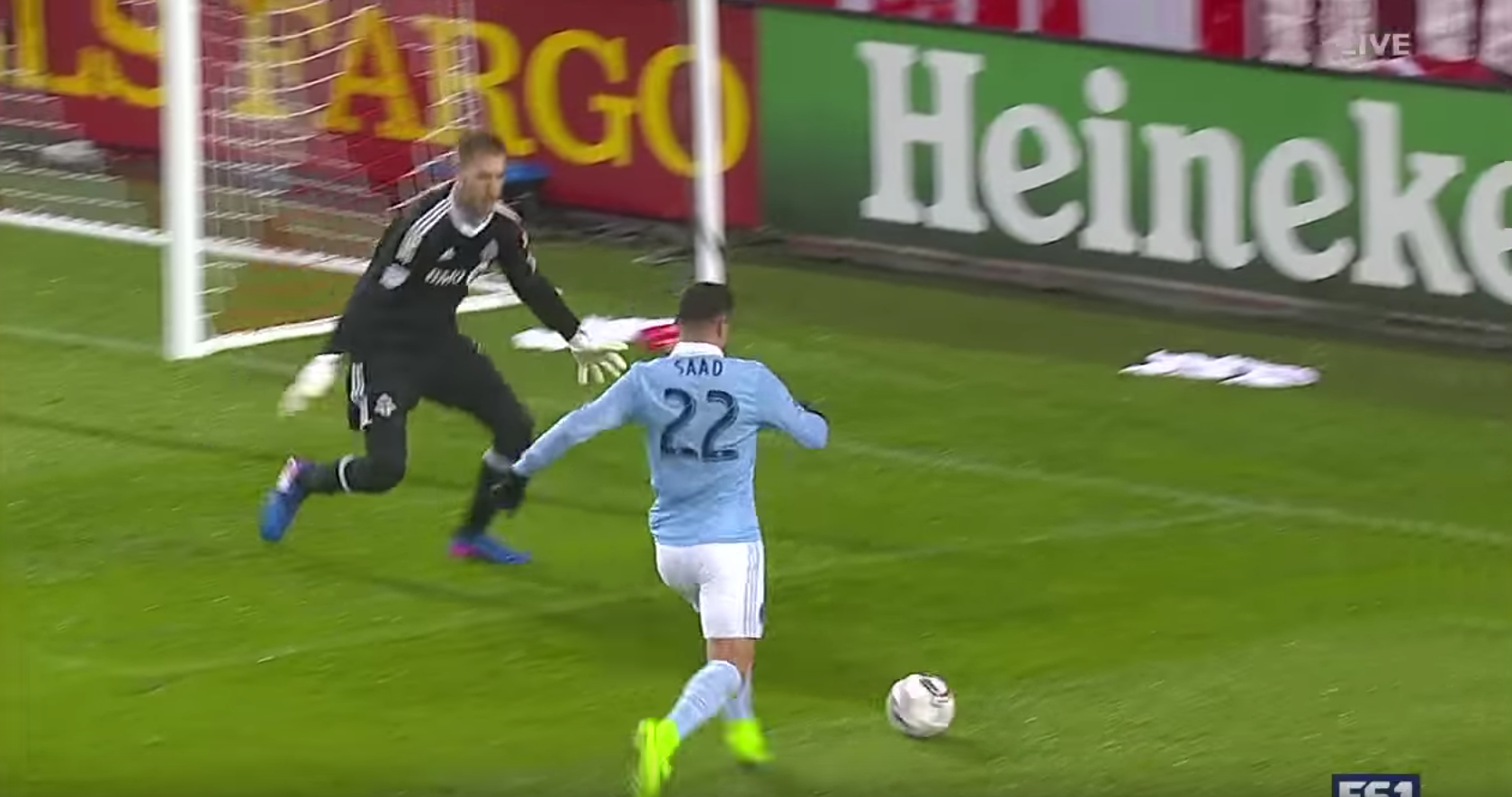
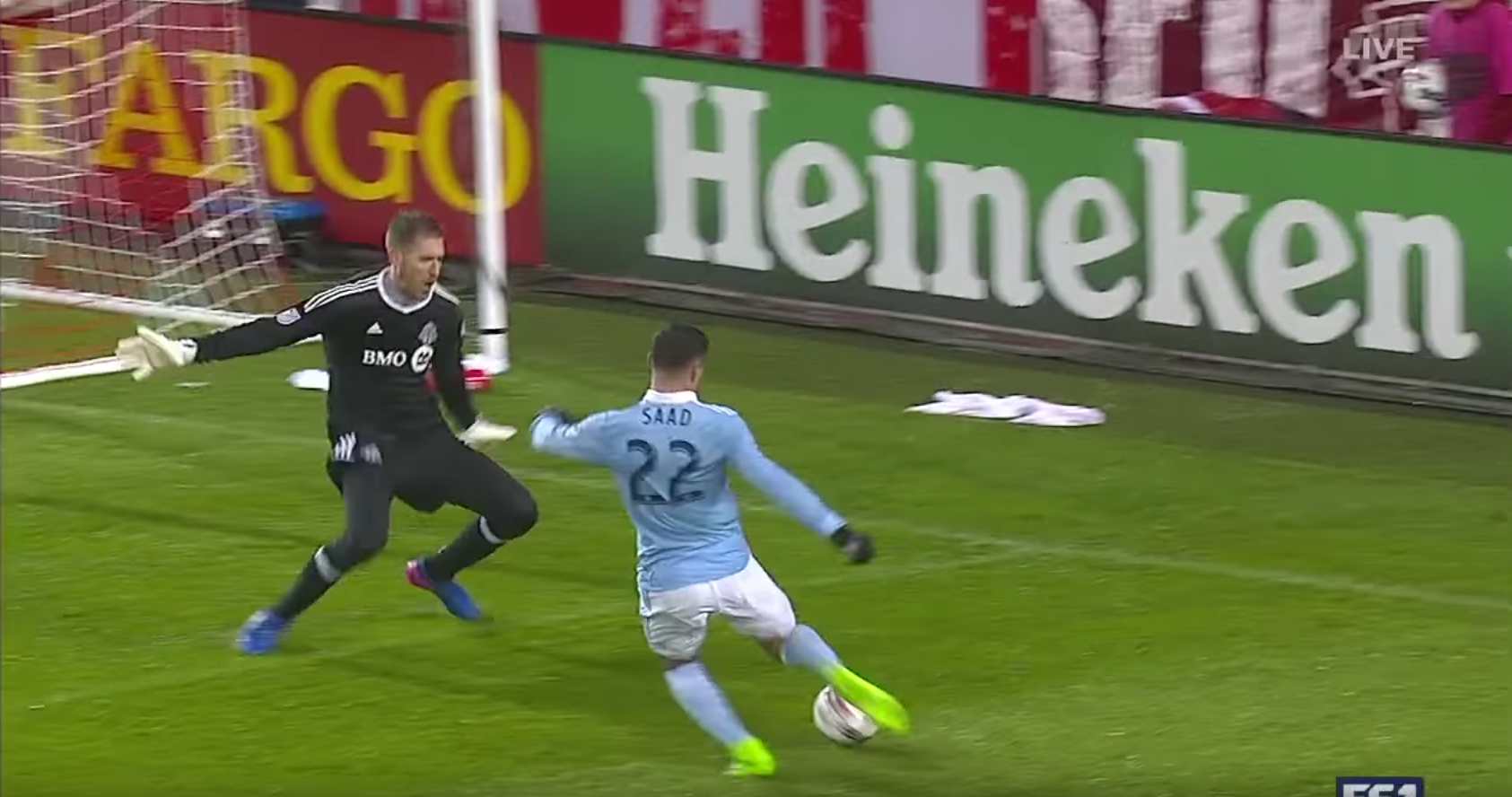
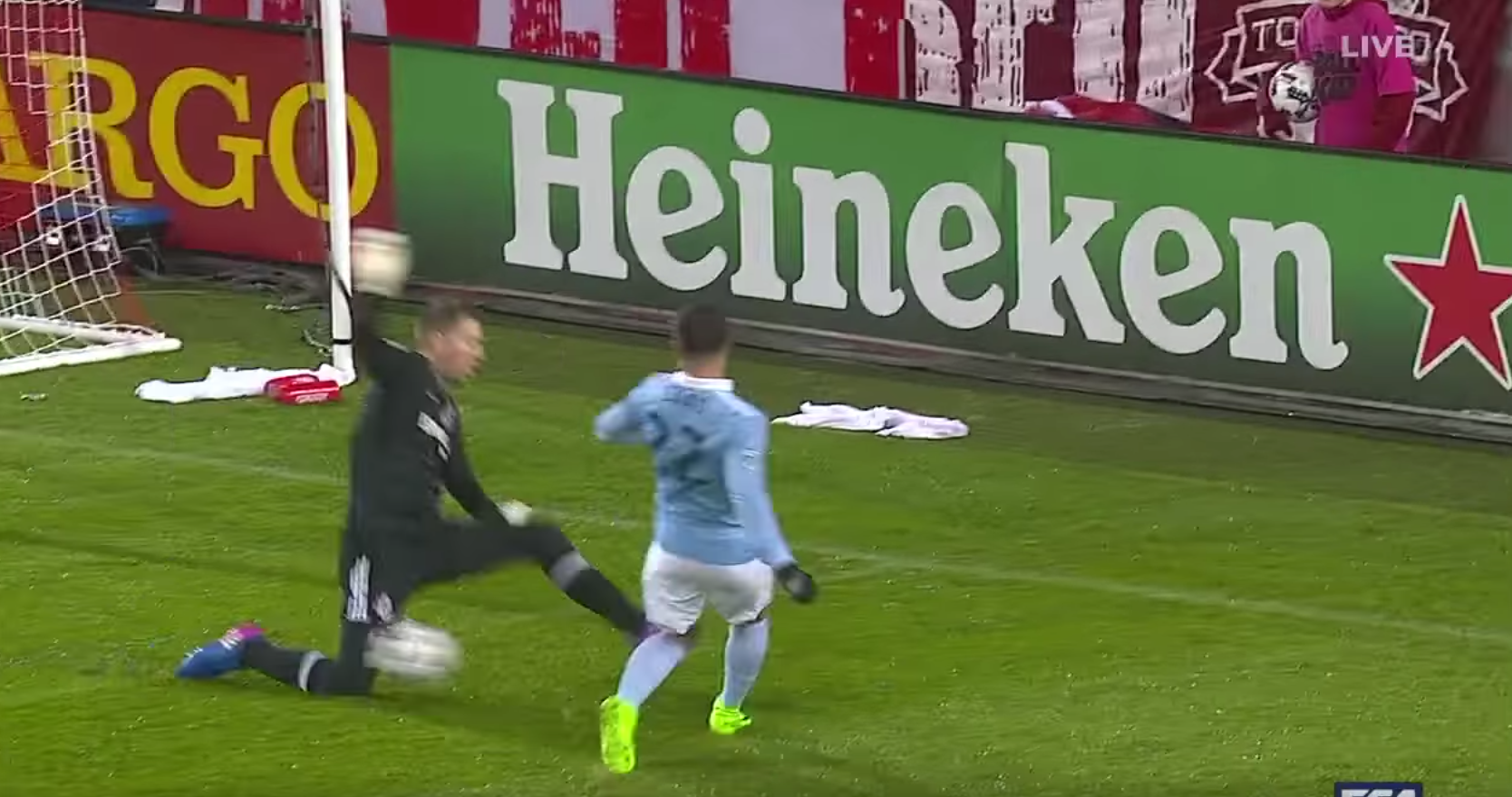
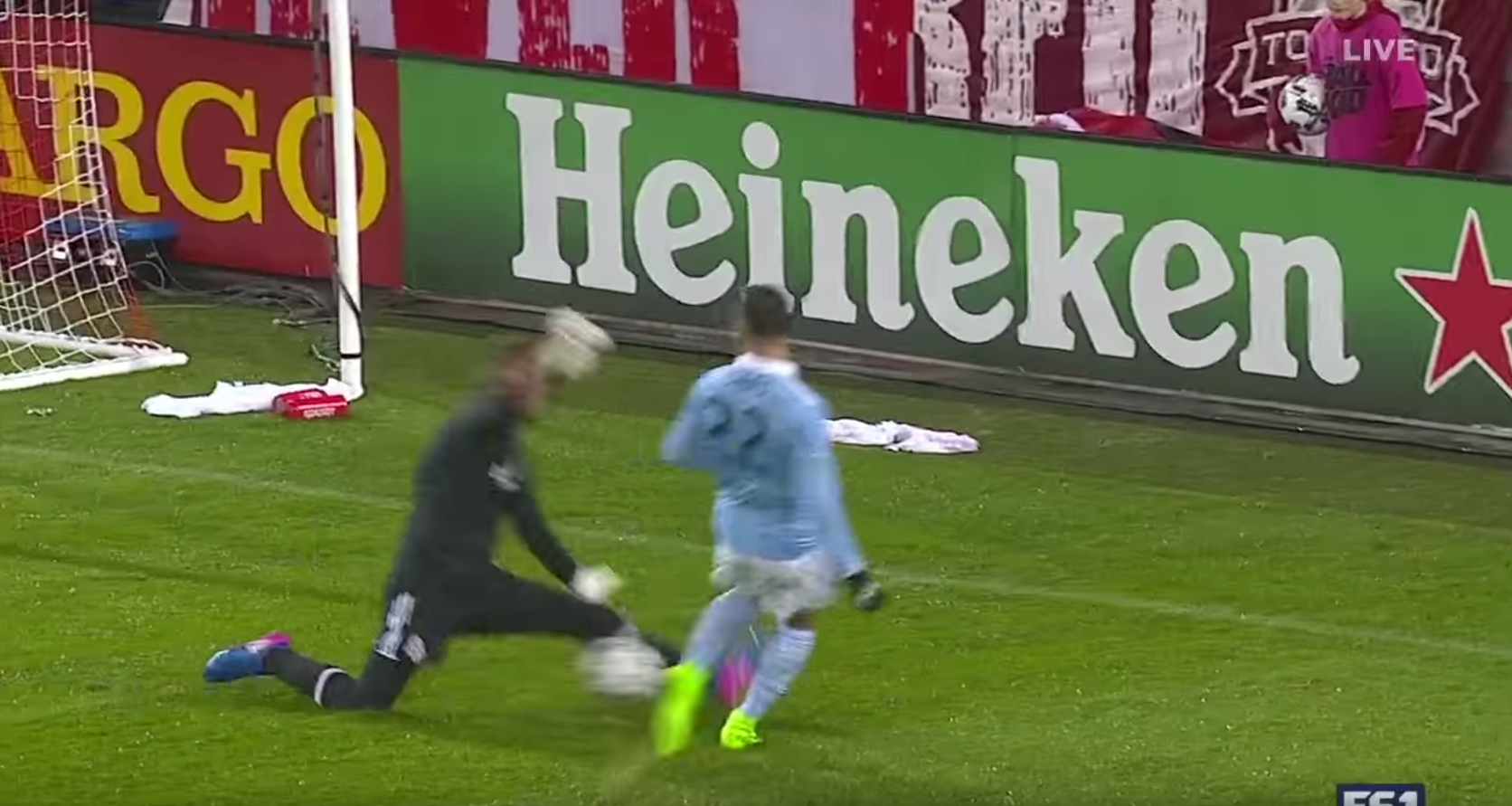
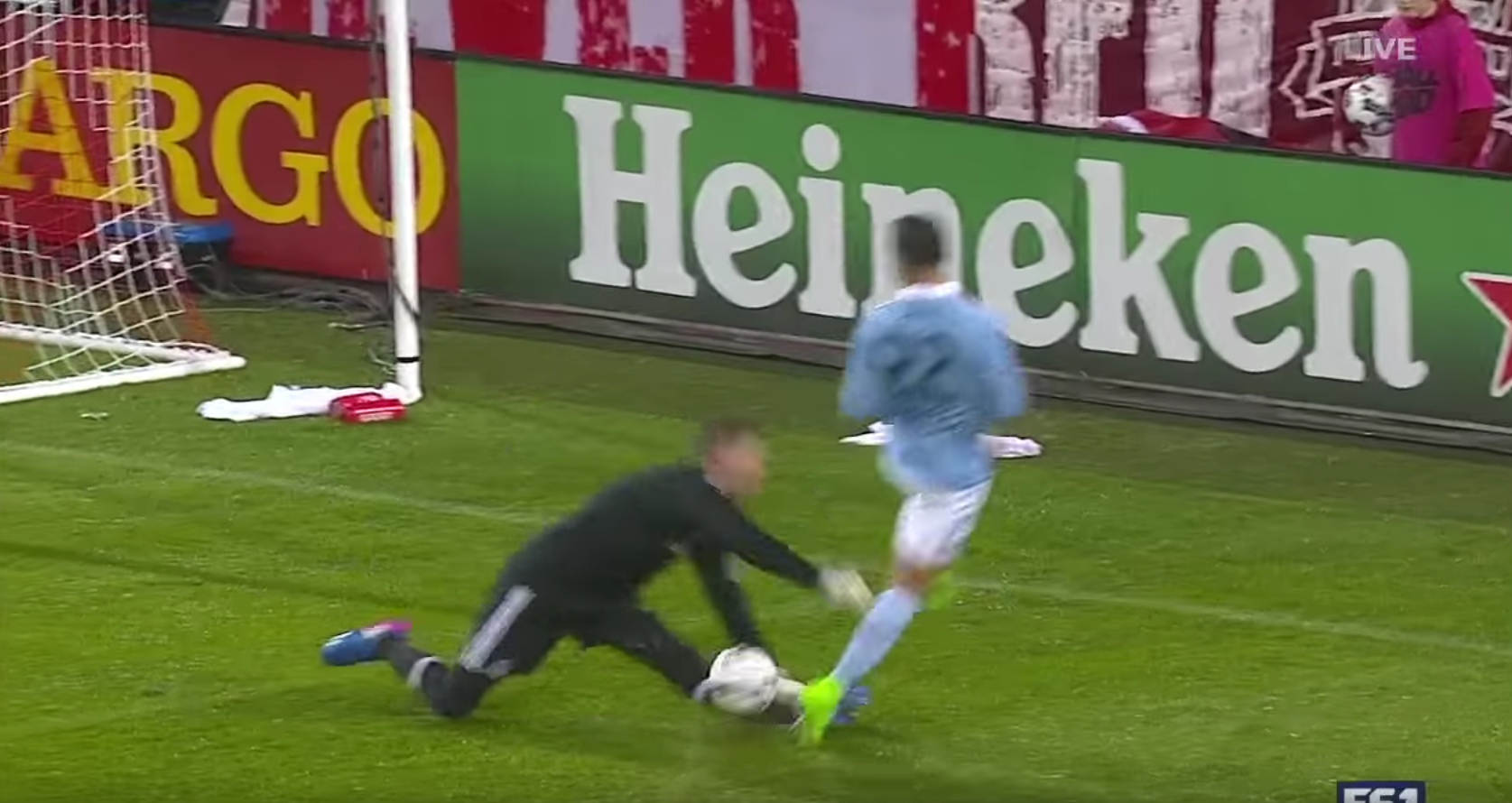
Much to everyone's knowledge, Clint Irwin suffered an injury that somehow only resulted in a hamstring strain that will sideline him for four-to-five weeks. While the turf monster is somewhat to blame here, Irwin's risky approach is part of the reason why he gets injured on the play. To utilize the K barrier, a goalkeeper must get his hips low to the ground very quickly. Imagine an airplane coming in for a landing. A goalkeeper should mimic the descent towards the ground in order for him to slide through it smoothly. If he stays too high, he risks bouncing or getting stuck, which we see with his right knee.
Additionally, Irwin's left foot is too far forward. If he turns his hips a little to the left, he'll probably still get his right knee stuck but he will be able to tumble forward instead of getting his left heel stuck in the ground.
The K save isn't easy to do just for these exact reasons. It's an unfortunate play that any fan hates to see. Hopefully Irwin recovers quickly and returns to the field soon.
Not a Complete Guessing Game
It was a rough night for Andre Blake. On the first goal, a perfectly deflected shot puts DC up 1-0, only to get a penalty call against them later in the half. Blake does a fantastic job of diving the right way, only to have his efforts put to waste by not finishing the save. The shot is skipped in, bouncing four yards from goal, and hops over Blake's hand. This brings up two great teaching points: simply guessing the right way is not enough some times. Perhaps the shooter delays his run, chips it, or even scuffs his cleat on the ground. There are a number of scenarios that can alter a shot and if a goalkeeper is trying to make the most of every save, he has to pay attention to each detail.
The other point is that hands are like best friends and they want to go everywhere together. Blake sends his right hand too low but if he brings his left hand along, the miscalculation isn't a problem. Blake puts himself in a great position but unfortunately doesn't finish the play. Philadelphia would later go on to score, which would have leveled the scoreline, but instead lost 2-1.
Scheduled Fall
The most notable play from Rimando was the poor step over move that led to an open goal for Minnesota. However, less notable was the fact that Rimando faced three 1v1s in the second half. On each of the three saves (1:50, 2:45, and 3:10 in video) he commits to attacking the play. On the last play, the ball is lobbed over him (and the goal, thankfully) on what seemed like a scripted play. Minnesota strikers having been paying attention to Rimando's tendencies, much like a penalty situation, and in the 77th minute, Rimando is lucky to not give up a fifth goal. Breakaways come in a different shapes and sizes, so a goalkeeper can't be so predictable that the striker knows what they're going to do before they do it.
Bush League Movement
Play stars at 3:21
In the 93rd minute, Montreal led Chicago 2-1 are were looking to spoil Bastian Schweinsteiger's first game with the Fire. A cross is whipped into the top of the box in Chicago's defensive third. Normally this situation isn't too troubling, expect Bush decides he's in poor position to make the play. Similar to one of the plays from last week, most of the time a goalkeeper should improve his position, unless it's going to cost him time on getting set. Bush retreats about four or five yards and too far to his left, putting him in an even worse position and doesn't start his dive until the ball has passed the penalty spot. If Bush stays where he is, he makes the save with ease and keeps three points for Montreal. Instead he turns a shot from twenty yards out to a shot where he can't react until the ball is within twelve yards of the goal.
Two Risky Passes
Bingham tries to rebound from a previously miserable week but unfortunately finds himself making another costly error, this one leading to the winning goal. After being pressured to pick up the ball, he quickly rolls out to his right. While there is definitely an open teammate there, it's not a great option because the second pass isn't obvious. Building out of the back isn't just about the first pass, it's about the next three after that. The right back has ran up the field, along with the other nine teammates, and now the center back is put under needless pressure. NYC scores ten seconds after Bingham rolls the ball out. It's not exactly Bingham's fault for the goal, but it definitely was avoidable.
Bush makes a similar risky play and I'm still undecided if it was worth it. It's a pass through traffic to a player that has three defenders step on him somewhat quickly. However, not only do I love the rarely scene overhead pass but the midfielder is screaming for the ball and has an outlet pass to his right. Perhaps at the youth level, you want to advise against against advanced passes but ultimately you have to trust your midfield with the ball at this level. Still, the goalkeeper sees more of the field than a teammate with his back to it.
The two passes fall in a gray area and there's a lot of personnel knowledge that comes with rolling the ball out. Bingham passes to a defender, Bush's pass goes to a midfielder. Both plays could have turned out positive or negative but the main takeaway is that a goalkeeper is responsible for the pass. Even if a player is open or yelling for the ball, the goalkeeper has to be smart enough to decide if it's a good option.
